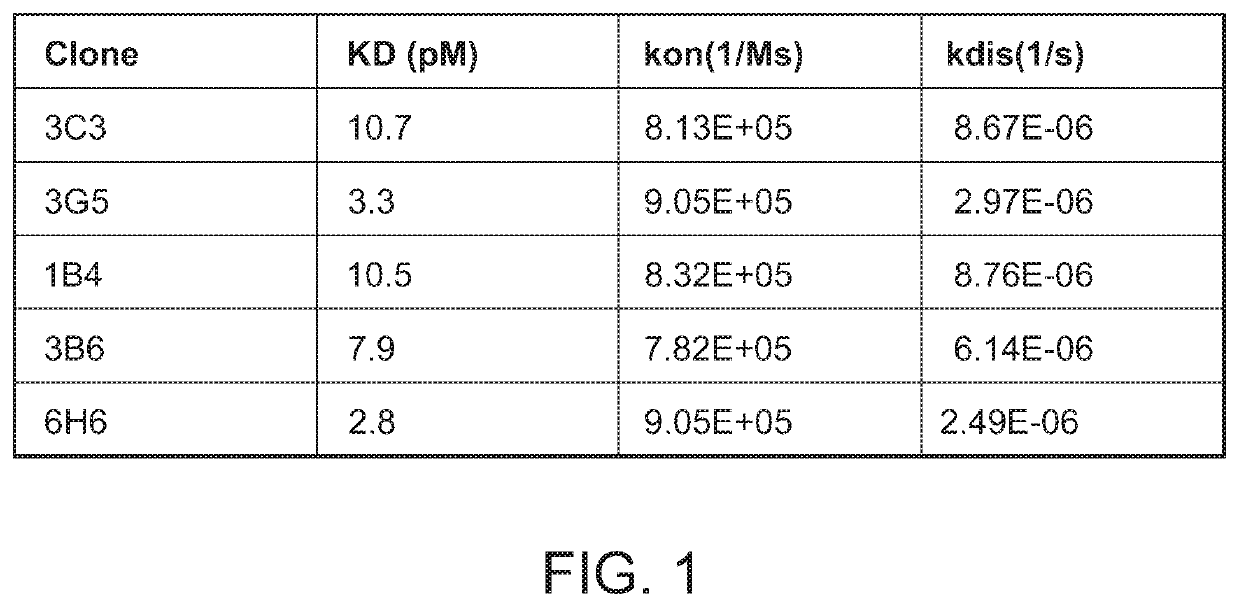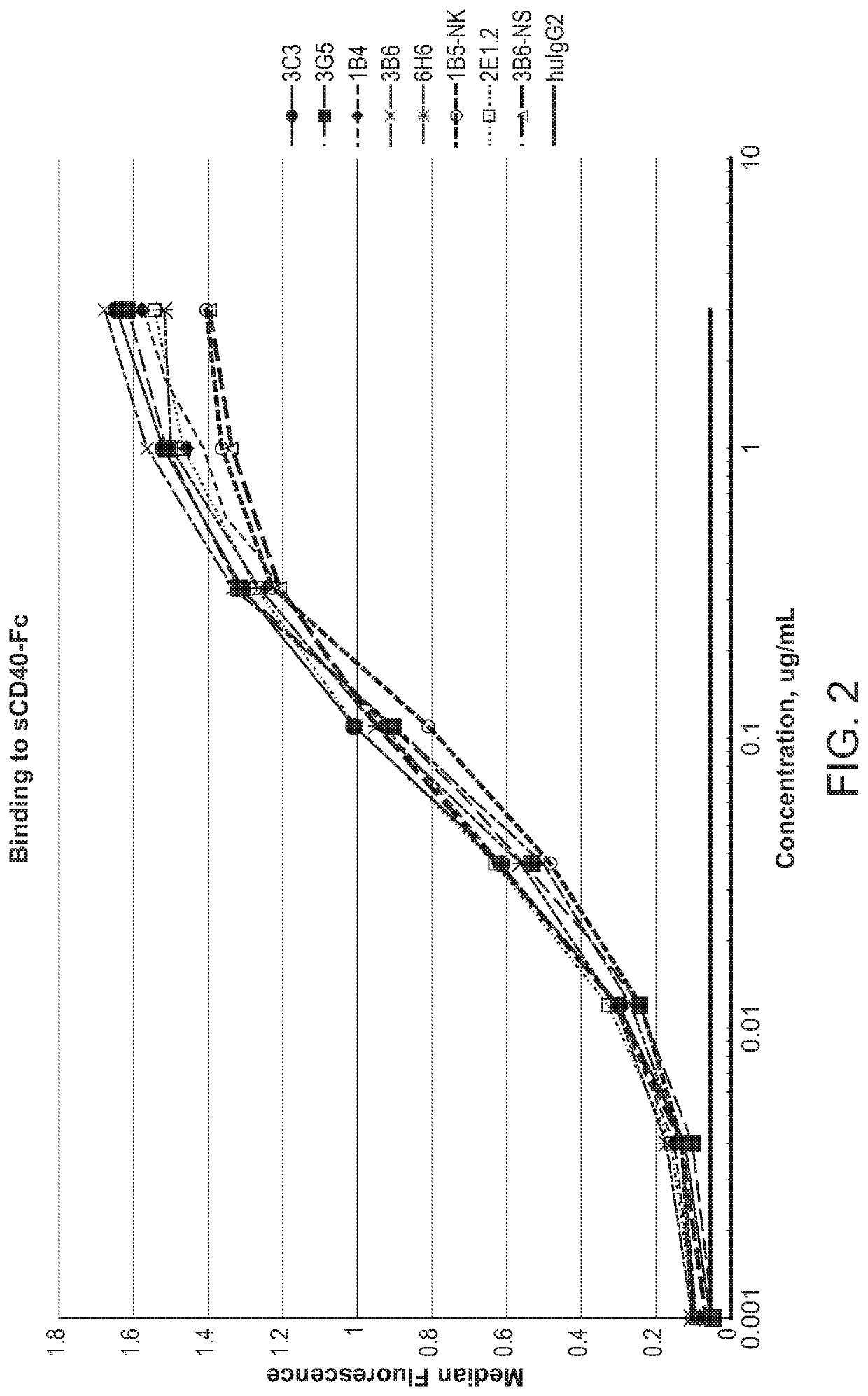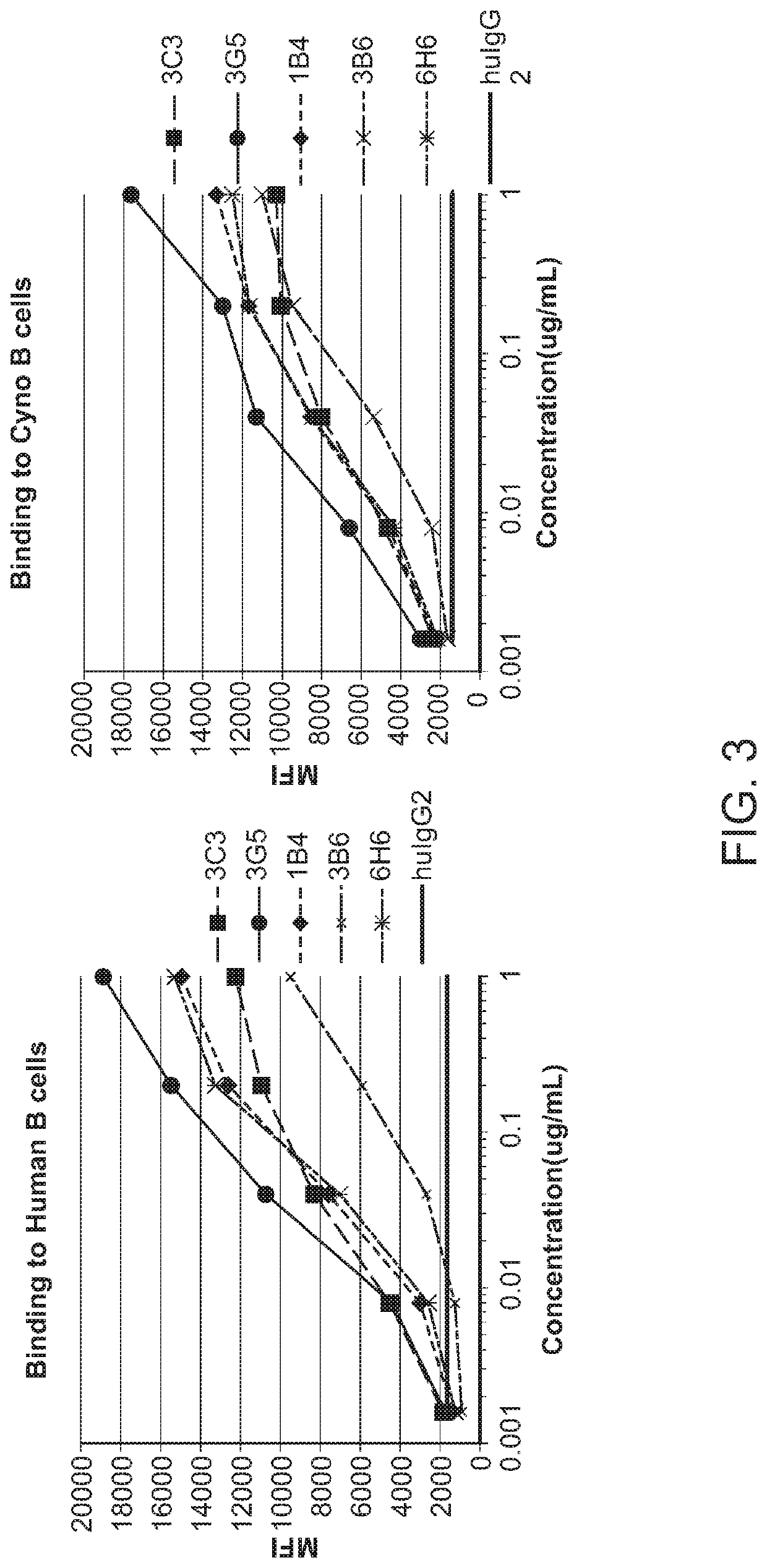Agonistic antibodies that bind CD40
a technology of agonistic antibodies and cd40, which is applied in the field of agonistic antibodies that bind cd40, can solve the problems of strong modulation of the immune system and potential adverse effects, and achieve the effects of enhancing the immune response to an antigen, enhancing t cell-mediated immune responses, and enhancing b-cell activation and/or cytokine production
- Summary
- Abstract
- Description
- Claims
- Application Information
AI Technical Summary
Benefits of technology
Problems solved by technology
Method used
Image
Examples
example 1
Generation of CD40-Specific Human Monoclonal Antibodies
[0382]Human anti-CD40 monoclonal antibodies were generated by immunizing the H2L2 strain of Harbour® transgenic mice with a soluble human CD40 antigen. Harbour® transgenic mice have had the endogenous mouse heavy chain (HC) and kappa light chain (K-chain) DNA sequences knocked out and have had sequences for the human variable (V) regions and rat constant (C) regions stably incorporated into the mouse genome.
[0383]Antigen and Immunization: The antigen was a soluble fusion protein comprising a CD40 extracellular domain fused with an antibody Fc domain (R&D Systems), or a recombinant human CD40-msG2a chimeric protein (made in-house). The antigen was mixed with Complete Freund's (Sigma) adjuvant for the first immunization. Thereafter, the antigen was mixed with Incomplete Freund's (Sigma). Additional mice were immunized with the soluble CD40 protein in MPL plus TDM adjuvant system (Sigma). 5-25 micrograms soluble recombinant CD40 an...
example 2
Determination of Affinity and Rate Constants of Human mAbs by Bio-Layer Interferometry (BLI)
[0396]Binding affinity and binding kinetics of various human anti-CD40 antibodies were examined by bio-layer interferometry (BLI) using an Octet™ QKe instrument (Pall ForteBio, Menlo Park, Calif.) according to the manufacturer's guidelines.
[0397]Purified antibodies from Example 1 were captured on Anti-Human Fc Capture (AHC) biosensors (Fortebio Product No. 18-5060). Each antibody was prepared in dilution buffer (10 mMPO4+150 mM NaCl+1 mg / mL BSA+0.5% Tween 20, pH 7.2) to 0.5 g / mL and loaded on freshly hydrated AHC biosensors for 35-50 sec at 25° C. and 1000 rpm plate shake speed to achieve a target response of 0.2 nm. Low levels of ligand were captured to limit any effects of mass transport of analyte on kinetic parameters. For one assay, eight biosensors were loaded with the same antibody.
[0398]Binding was determined by exposing six of the antibody loaded biosensors to analyte: soluble human ...
example 3
Assays to Determine Human mAb Binding Characteristics to CD40
[0402]Microtiter plates were coated with recombinant human CD40-Fc in PBS, and then blocked with 5% bovine serum albumin in PBS. Protein A purified human mAbs from Example 1 and an isotype control were added at various concentrations and incubated at 37° C. The plates were washed with PBS / Tween and then incubated with a goat-anti-human IgG F(ab′)2-specific polyclonal reagent conjugated to horseradish peroxidase at 37° C. After washing, the plates were developed with HRP substrate, and analyzed at OD 450-650 using a microtiter plate reader. Representatives binding curves are shown in FIG. 2.
[0403]To establish that cynomolgus macques are a relevant model for testing anti-CD40 mAbs, purified macaque PBMC's or human PBMC's were incubated with varying concentrations of anti-human CD40 mAb for 20 minutes at room temperature on a plate shaker. The cells were then washed twice with PBS containing 0.1% BSA and 0.05% NaN3 (PBA). A g...
PUM
 Login to View More
Login to View More Abstract
Description
Claims
Application Information
 Login to View More
Login to View More - R&D
- Intellectual Property
- Life Sciences
- Materials
- Tech Scout
- Unparalleled Data Quality
- Higher Quality Content
- 60% Fewer Hallucinations
Browse by: Latest US Patents, China's latest patents, Technical Efficacy Thesaurus, Application Domain, Technology Topic, Popular Technical Reports.
© 2025 PatSnap. All rights reserved.Legal|Privacy policy|Modern Slavery Act Transparency Statement|Sitemap|About US| Contact US: help@patsnap.com



